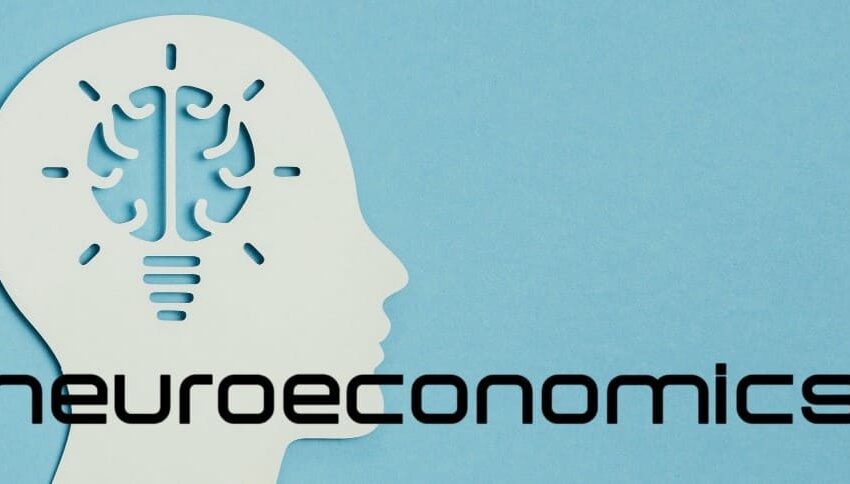
Overview:
In the world of technological advancement, the Brain-Cloud Interface (BCI) emerges as a pioneering frontier, blurring the lines between human cognition and digital connectivity. This transformative technology represents a paradigm shift, where the intricate workings of the human brain interface directly with the vast computational power of cloud-based systems. By harnessing neural signals through sophisticated sensors and processing algorithms, BCIs hold the potential to revolutionize how we interact with machines, augment our cognitive abilities, and redefine the boundaries of human potential.
At its core, the BCI concept envisions a future where thoughts can seamlessly translate into actions, where communication transcends speech or touch, and where disabilities are overcome with unprecedented ease. As researchers delve deeper into the complexities of neural data interpretation and technological integration, the possibilities for medical therapies, communication enhancements, and immersive experiences expand exponentially. However, amidst these promises lie significant challenges—technical, ethical, and regulatory—that must be navigated with care to unlock the full transformative power of BCIs while safeguarding privacy, autonomy, and societal well-being.
Contents:
- What is Brain-Cloud Interface
- Key components of Brain-Cloud Interface
- Key application areas of Brain-Cloud Interface
- Key challenges and risks with Brain-Cloud Interfaces
- Key regulatory considerations of Brain-Cloud Interfaces
- The potential futuristic world of Brain-Cloud Interfaces
- Summing Up
So, what is Brain-Cloud Interface:
The Brain-Cloud Interface (BCI) is an advanced technological concept that refers to the direct communication link between the human brain and cloud-based computing systems. This interface aims to enable seamless interaction and data exchange between the brain and external digital devices, leveraging the vast computational resources and storage capabilities of the cloud.
Key components of Brain-Cloud Interface (BCI):
1. Neural Sensors/Interfaces:
Electrodes: Devices implanted in the brain or placed on the scalp to detect electrical activity from neurons.
Non-invasive Sensors: Devices such as EEG (electroencephalography) caps that record brain activity without the need for surgery.
2. Signal Acquisition Systems:
Data Acquisition: Systems that capture the raw data from neural sensors and convert it into digital signals that can be processed by computers.
3. Signal Processing Units:
Pre-processing: Initial filtering and noise reduction of the neural signals to remove artifacts and enhance signal quality.
Feature Extraction: Identifying relevant patterns and features in the neural data that correspond to specific thoughts, intentions, or actions.
4. Data Transmission:
Wired/Wireless Communication: Methods for transmitting the processed neural data from the acquisition system to the cloud. This could involve wireless technologies such as Bluetooth or Wi-Fi.
5. Cloud Computing Infrastructure:
Data Storage: Scalable storage solutions to handle large volumes of neural data.
Computational Resources: High-performance computing capabilities to analyze and interpret neural signals in real-time.
Machine Learning Algorithms: Advanced algorithms that learn from neural data to improve the accuracy and functionality of the interface over time.
6. User Interface:
Feedback Mechanisms: Visual, auditory, or tactile feedback provided to the user to confirm actions or provide information.
Control Systems: Interfaces that allow users to control external devices or applications based on their neural signals (e.g., controlling a computer cursor, robotic arm, or virtual reality environment).
7. Security and Privacy Systems:
Data Security: Measures to ensure the security of the data being transmitted and stored, protecting it from unauthorized access or breaches.
Protocols: To ensure user privacy and consent regarding the collection and use of their neural data.
Key application areas of Brain-Cloud Interface (BCI):
1. Medical and Therapeutic Applications:
Neuroprosthetics: Enabling individuals with disabilities to control prosthetic limbs through brain signals, restoring movement and functionality.
Communication Aids: Helping individuals with severe communication impairments (e.g., those with ALS) to express themselves using brain-controlled devices.
Rehabilitation: Assisting in the rehabilitation of stroke patients or those with traumatic brain injuries by facilitating neural plasticity and recovery through targeted brain exercises.
Mental Health Monitoring: Providing real-time monitoring of brain activity to detect and manage mental health conditions such as depression, anxiety, and PTSD.
2. Human-Computer Interaction:
Hands-Free Control: Allowing users to control computers, smartphones, and other digital devices through brain signals, providing a more intuitive and accessible way to interact with technology.
Virtual Reality (VR) and Augmented Reality (AR): Enhancing VR and AR experiences by allowing users to interact with virtual environments directly through their thoughts.
3. Education and Training:
Personalized Learning: Tailoring educational content to individual learning styles and paces by monitoring brain activity and engagement levels.
Skill Acquisition: Accelerating the acquisition of new skills by providing real-time feedback and adaptive training programs based on brain activity.
4. Entertainment:
Gaming: Developing brain-controlled games that offer immersive and interactive experiences.
Creative Tools: Enabling artists, musicians, and writers to create content directly through brain interfaces, potentially opening new avenues for creativity.
5. Research and Neuroscience:
Brain Mapping: Advancing our understanding of brain function by providing detailed, real-time data on neural activity.
Cognitive and Behavioral Studies: Facilitating studies on cognition, perception, and behavior by providing a direct link to brain activity.
6. Authentication:
Biometric Identification: Using unique patterns of brain activity as a biometric identifier for secure authentication in various applications.
7. Remote Collaboration:
Telepresence: Enabling more immersive and intuitive remote collaboration by integrating brain interfaces with telepresence technologies, allowing users to share thoughts and intentions more directly.
Key challenges and risks with Brain-Cloud Interfaces (BCIs):
1. Technical Challenges:
Signal Accuracy and Reliability: Ensuring that neural signals are accurately captured and interpreted is a major technical hurdle. Noise and interference can affect the quality of the data.
Latency: Minimizing the time delay between signal acquisition, processing, and response is crucial for real-time applications.
Data Transmission: Securely and efficiently transmitting large amounts of neural data to the cloud without loss or corruption is challenging.
Scalability: Developing systems that can scale to accommodate multiple users and large datasets while maintaining performance.
2. Medical and Biological Risks:
Invasiveness: Invasive BCIs, such as those requiring brain implants, carry risks associated with surgery, including infection, bleeding, and long-term health impacts.
Long-term Effects: The long-term effects of using BCIs, especially invasive ones, on brain health and overall well-being are not yet fully understood.
Brain Plasticity: Prolonged use of BCIs may alter brain plasticity in unforeseen ways, potentially impacting natural brain functions.
3. Privacy Concerns:
Data Breaches: Neural data is highly sensitive and personal. Unauthorized access or breaches could lead to significant privacy violations.
Hacking and Cybersecurity: BCIs could become targets for hacking, leading to potential misuse or manipulation of neural data.
Data Ownership: Issues around who owns and controls the neural data collected by BCIs need to be addressed.
4. Ethical and Societal Challenges:
Consent and Autonomy: Ensuring informed consent and protecting user autonomy is crucial, particularly for individuals who may not fully understand the implications of using BCIs.
Inequality and Accessibility: There is a risk of BCIs exacerbating existing inequalities if access to these technologies is limited to certain groups.
Mental Privacy: BCIs could potentially read thoughts and intentions, raising significant concerns about mental privacy and the potential for misuse by employers, governments, or other entities.
5. Legal and Regulatory Issues:
Regulation: Establishing regulatory frameworks to ensure the safe and ethical use of BCIs is complex and varies by region.
Liability: Determining liability in cases of BCI malfunctions or misuse is challenging, especially with multiple stakeholders involved (manufacturers, healthcare providers, etc.).
6. Interference with Natural Functions:
Cognitive Overload: Integrating BCIs with natural cognitive processes may lead to cognitive overload or distraction.
Behavioral Changes: Extended use of BCIs could potentially alter user behavior or cognition in unintended ways.
7. Cost and Accessibility:
High Costs: The development, maintenance, and deployment of BCI technology can be expensive, potentially limiting access to those who can afford it.
Training and Adaptation: Users may require extensive training to effectively use BCIs, and there may be a learning curve associated with adapting to the technology.
Key regulatory considerations of Brain-Cloud Interfaces (BCIs):
1. Safety and Efficacy:
Medical Device Regulations: Invasive BCIs, especially those used for medical purposes, must comply with medical device regulations set by bodies like the FDA (Food and Drug Administration) in the U.S., EMA (European Medicines Agency) in Europe, and other national regulatory agencies. These regulations ensure that the devices are safe and effective for their intended use.
Clinical Trials: Rigorous clinical trials are required to demonstrate the safety and efficacy of BCIs. This involves phases of testing on human subjects under strict oversight.
2. Data Privacy and Security:
Data Protection Laws: BCIs must comply with data protection regulations like GDPR (General Data Protection Regulation) in Europe and CCPA (California Consumer Privacy Act) in the U.S. These laws govern the collection, storage, and processing of personal data, ensuring that user privacy is protected.
Security Standards: Regulations must mandate robust cybersecurity measures to protect neural data from unauthorized access, breaches, and cyberattacks.
3. Ethical Considerations:
Informed Consent: Regulations must ensure that users provide informed consent before using BCIs, understanding the potential risks and benefits. This is particularly important for vulnerable populations.
Mental Privacy: There should be guidelines to protect users’ mental privacy, preventing unauthorized reading or manipulation of thoughts and intentions.
Non-Discrimination: Ethical use policies must ensure that BCI technologies do not exacerbate existing inequalities or discriminate against certain groups.
4. Liability and Accountability:
Product Liability: Regulations should clarify the liability of manufacturers, developers, and healthcare providers in cases of BCI malfunctions, misuse, or adverse effects.
Accountability Mechanisms: Clear accountability mechanisms must be established to address grievances and ensure that responsible parties can be held accountable for violations.
5. Usage Restrictions:
Non-Medical Applications: Regulations may need to address the use of BCIs in non-medical contexts, such as entertainment, education, and workplace environments, to ensure they are used ethically and safely.
Research Use: Guidelines for the use of BCIs in research should be established to ensure ethical conduct, especially in studies involving human subjects.
6. Standardization and Interoperability:
Technical Standards: Developing technical standards for BCI devices and systems can promote interoperability, safety, and reliability. Standards organizations like ISO (International Organization for Standardization) and IEEE (Institute of Electrical and Electronics Engineers) may play a role in this.
Certification Processes: Establishing certification processes for BCI devices ensures they meet established standards and regulatory requirements before being marketed or deployed.
7. International Harmonization:
Cross-Border Regulations: Given the global nature of technology, harmonizing regulations across countries can facilitate international collaboration, trade, and research while ensuring consistent safety and ethical standards.
8. Monitoring and Compliance:
Regulatory Oversight: Continuous monitoring and oversight by regulatory bodies are essential to ensure ongoing compliance with regulations and to address emerging risks or issues.
Audits and Inspections: Regular audits and inspections of BCI manufacturers and service providers can help ensure adherence to regulatory standards.
The potential futuristic world of Brain-Cloud Interfaces (BCIs):
1. Enhanced Cognitive Abilities:
Memory Augmentation: Cloud-connected BCIs could enhance human memory by providing external storage and retrieval of information, allowing users to access memories or data seamlessly.
Learning and Skill Acquisition: Instant access to vast educational resources and training programs could accelerate learning and skill acquisition, making it possible to “download” new skills or knowledge directly into the brain.
2. Telepathy and Communication:
Thought Communication: Advanced BCIs could enable direct brain-to-brain communication, allowing people to share thoughts, emotions, and sensory experiences without speaking or writing.
Language Translation: Real-time translation of thoughts into different languages could break down language barriers, facilitating global communication and collaboration.
3. Medical and Therapeutic Innovations:
Neural Repair and Regeneration: BCIs could be used to repair or regenerate damaged neural pathways, offering treatments for neurological conditions such as paralysis, spinal cord injuries, and neurodegenerative diseases.
Mental Health: Continuous monitoring and personalized interventions could help manage mental health conditions like depression, anxiety, and PTSD more effectively.
4. Sensory Augmentation:
Enhanced Senses: BCIs could augment human senses, providing superhuman abilities such as enhanced vision, hearing, or even new senses like echolocation or thermal imaging.
Virtual and Augmented Reality: Immersive experiences could become more intuitive and realistic, with BCIs providing direct sensory feedback and control within virtual environments.
5. Advanced Human-Computer Interaction:
Seamless Interface: Future BCIs could provide a seamless interface with computers and other digital devices, enabling hands-free control of technology and more natural interactions.
Brain-Driven Automation: Smart homes, vehicles, and workplaces could be controlled through thought alone, increasing convenience and efficiency.
6. Collective Intelligence and Collaboration:
Hive Minds: Groups of people could connect their brains to create collective intelligence networks, pooling their cognitive resources to solve complex problems and innovate more rapidly.
Distributed Learning: Collaborative learning environments where knowledge and experiences are shared instantly among connected users.
7. Ethical and Philosophical Implications:
Identity and Privacy: As BCIs evolve, questions about the nature of personal identity, consciousness, and privacy will become more pressing. Regulations and ethical guidelines will need to adapt accordingly.
Digital Immortality: The concept of uploading consciousness to the cloud or preserving neural data for future generations could become a reality, raising profound philosophical and ethical questions.
8. Security and Autonomy:
Brain Data Security: As the collection and use of neural data become more widespread, robust security measures will be essential to protect against hacking and unauthorized access.
Autonomy and Control: Ensuring that individuals retain control over their own neural data and how it is used will be crucial to prevent misuse and maintain autonomy.
9. Integration with AI:
Cognitive Enhancement: AI could work alongside BCIs to provide real-time cognitive enhancements, such as predictive text, problem-solving assistance, and creative brainstorming.
Personalized AI Assistants: AI-driven personal assistants integrated with BCIs could understand and anticipate user needs based on real-time brain activity, providing highly personalized support.
Summing Up:
The Brain-Cloud Interface (BCI) stands at the forefront of technological innovation, bridging the gap between human cognition and cloud-based computing capabilities. This transformative technology promises to redefine human-machine interaction by enabling direct control over digital devices through neural signals. From enhancing medical treatments and cognitive abilities to revolutionizing communication and immersive experiences, BCIs hold vast potential across diverse domains.
Yet, realizing this potential requires navigating significant challenges. Technical complexities, such as signal reliability and data security, demand robust solutions to ensure seamless operation and protect user privacy. Ethical considerations, including consent, autonomy, and the equitable distribution of benefits, must guide regulatory frameworks. As BCIs evolve, fostering collaboration among stakeholders—from researchers and developers to policymakers and ethicists—will be crucial in shaping a future where these innovations enhance human capabilities while upholding ethical standards and societal values.











